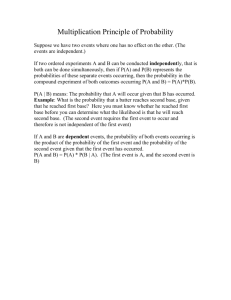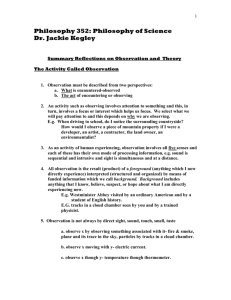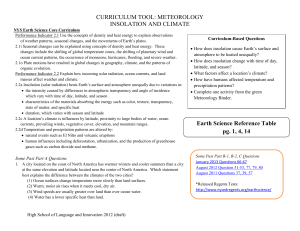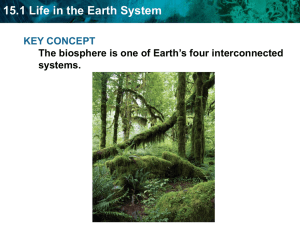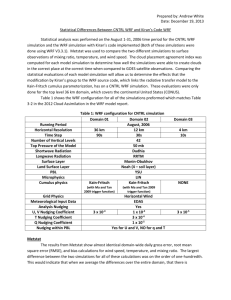File
advertisement
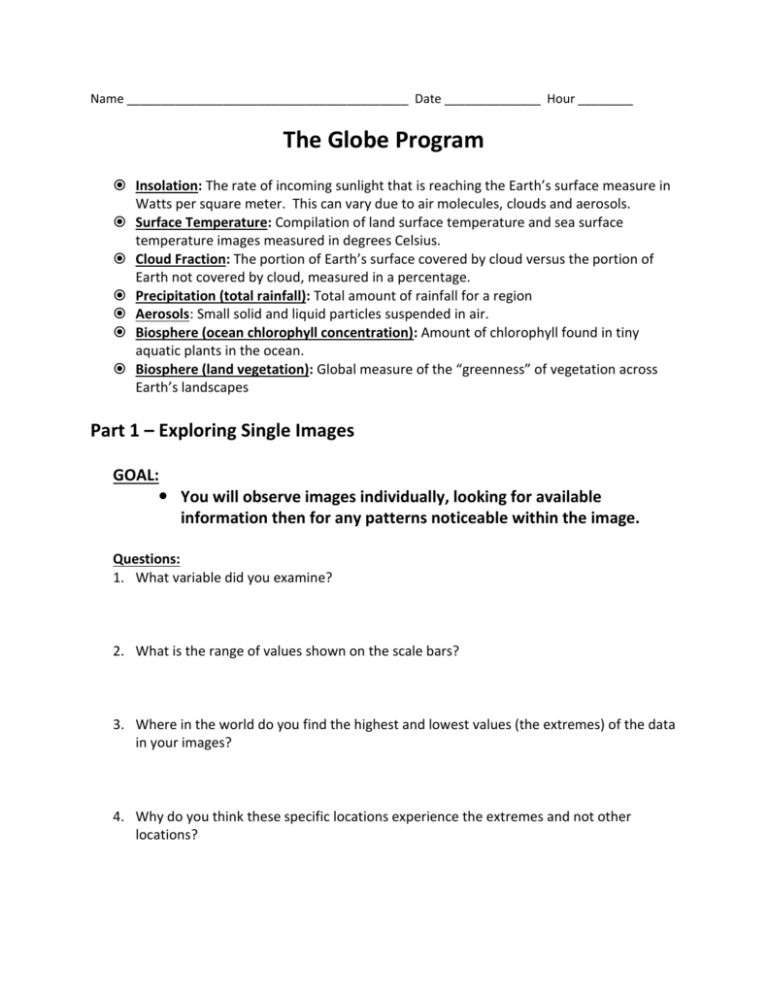
Name _________________________________________ Date ______________ Hour ________ The Globe Program Insolation: The rate of incoming sunlight that is reaching the Earth’s surface measure in Watts per square meter. This can vary due to air molecules, clouds and aerosols. Surface Temperature: Compilation of land surface temperature and sea surface temperature images measured in degrees Celsius. Cloud Fraction: The portion of Earth’s surface covered by cloud versus the portion of Earth not covered by cloud, measured in a percentage. Precipitation (total rainfall): Total amount of rainfall for a region Aerosols: Small solid and liquid particles suspended in air. Biosphere (ocean chlorophyll concentration): Amount of chlorophyll found in tiny aquatic plants in the ocean. Biosphere (land vegetation): Global measure of the “greenness” of vegetation across Earth’s landscapes Part 1 – Exploring Single Images GOAL: You will observe images individually, looking for available information then for any patterns noticeable within the image. Questions: 1. What variable did you examine? 2. What is the range of values shown on the scale bars? 3. Where in the world do you find the highest and lowest values (the extremes) of the data in your images? 4. Why do you think these specific locations experience the extremes and not other locations? 5. Are any patterns in the data noticeable? (Are patterns different on different continents? Different over water than over land?) If so, explain these patterns: Part 2 – Exploring Annual Changes GOAL: You will observe images as a group, looking for any changes that are occurring throughout the year. Questions: 1. What patterns do you see through the year? 2. What explanations can you suggest for these patterns? 3. Choose a location or region. During which months do the extreme highs and lows occur? 4. What explanations can you suggest for the timing of those extremes? 5. What differences, if any, do you find between the year’s variations over the oceans versus the year’s variations over the continents? 6. Are there regions that remain relatively unchanged over the year? Why do you think this happens? Part 3 – Exploring Relationships Between Two Variables GOAL: You will observe images from two variables, looking for possible relationships that are occurring throughout the year. Background Info: 1. For this activity, see the list below to determine which group you will be working with: Group One (Insolation) with Group Two (Surface Temperature) Group Three (Cloud Fraction) with Group Four (Precipitation) Group Five (Aerosols) with Group Six (Biosphere) 2. Arrange the images in chronological order beginning with January. 3. Line up the images so that each month is together, with one set of images above the other. Questions: 1. What relationship do you see between your two data sets? 2. Do the relationships appear to be directly or inversely proportional? Explain how you know this. Part 4 – Exploring Relationships Among Variables for a Particular Month GOAL: You will observe images from all six variables for one month, looking for possible relationships that are occurring between or among variables for your particular month. Questions: 1. Which regions experience the extreme highs and lows for each variable? 2. Which regions don’t experience the extremes? 3. Why do you think this occurs? 4. What differences, if any, do you find between looking at the variables over the oceans versus the variables over the continents? Part 5 – Exploring Relationships Among Variables Six Months Apart GOAL: You will observe images from all six variables for two months that are six months apart, looking for relationships and/or changes that are occurring among variables. Background Info: 1. The groups formed in activity 4 will come together in the following pairs: Group One (January) with Group Four (July) Group Two (March) with Group Five (September) Group Three (May) with Group Six (November) 2. Line your global images next to each other by variable (Insolation January next to Insolation July, Surface Temperature January next to Surface Temperature July, etc.) Questions: 1. Which variable(s) change the most over the six-month period? 2. Which variable(s) change the least? 3. Why do you think this happens? 4. Do you see any relationships among the variables that you didn’t see previously?
